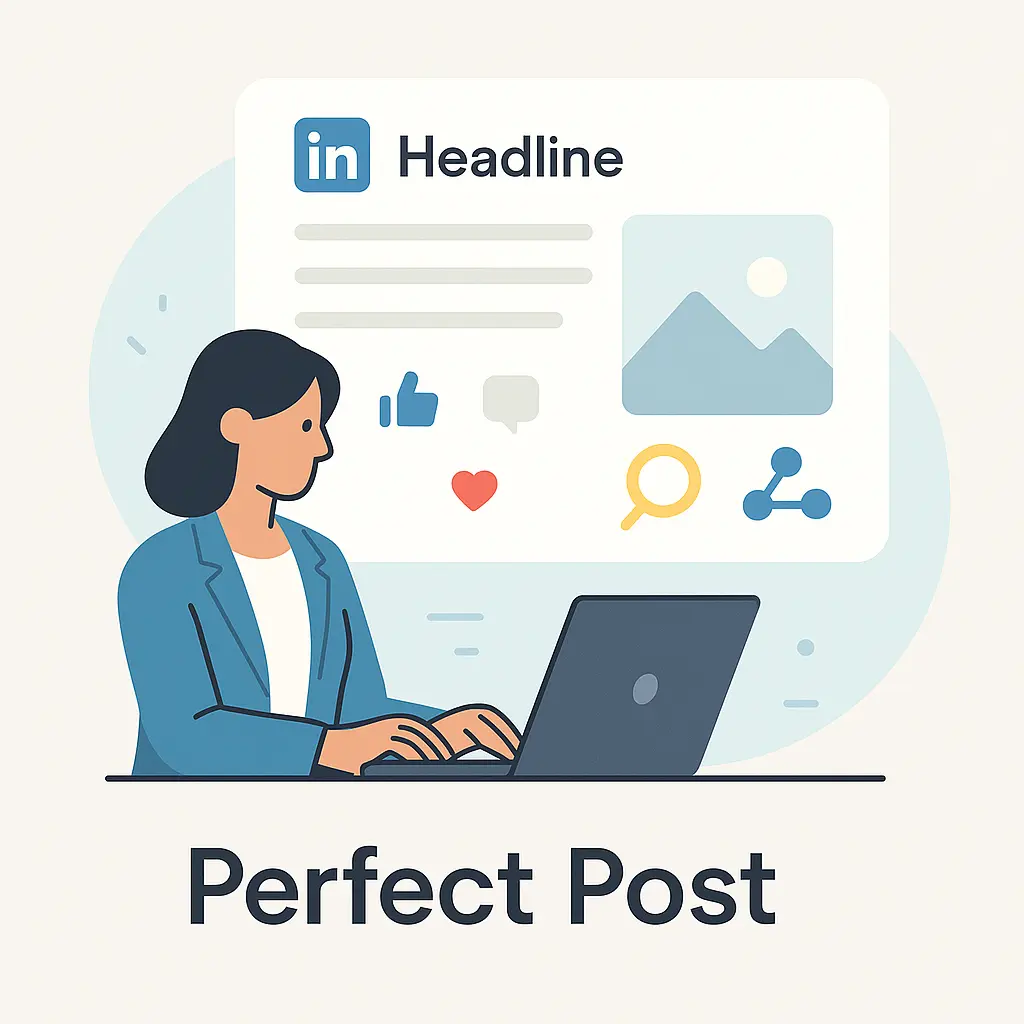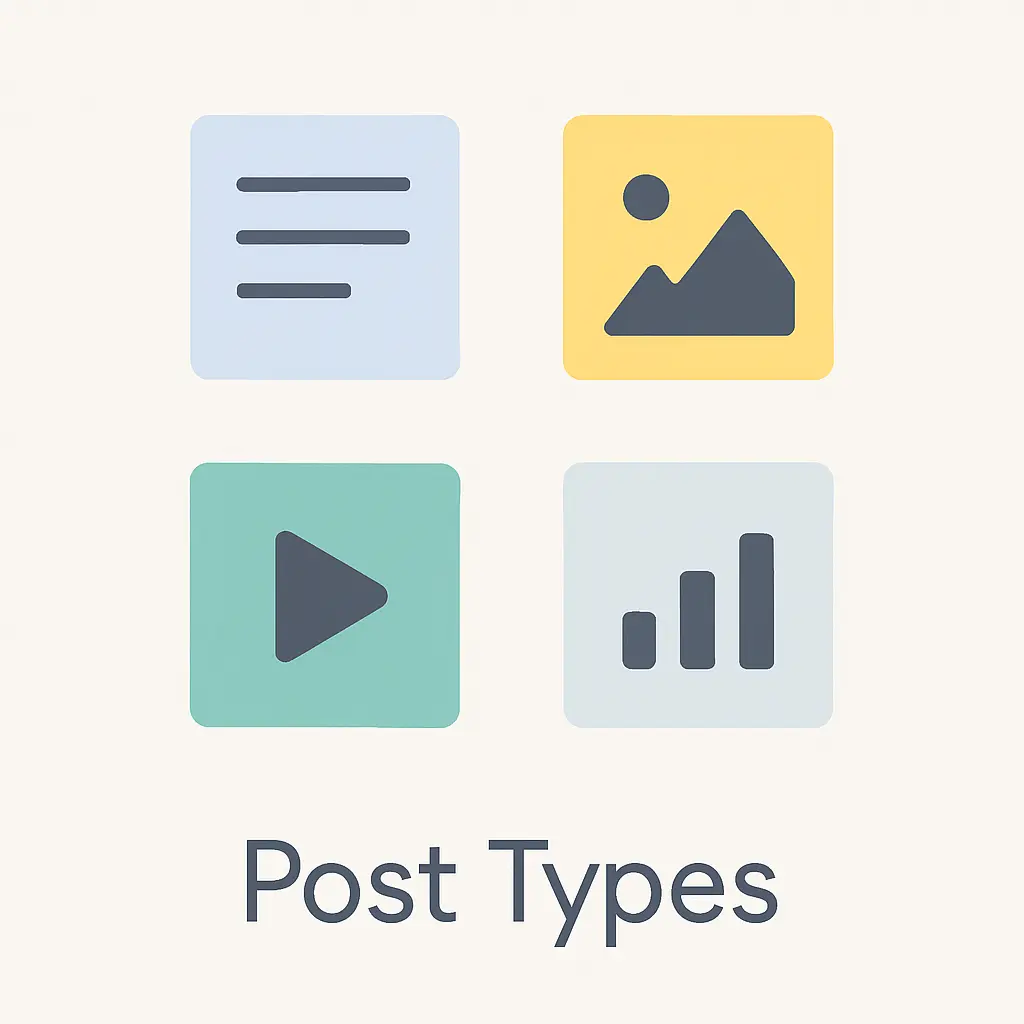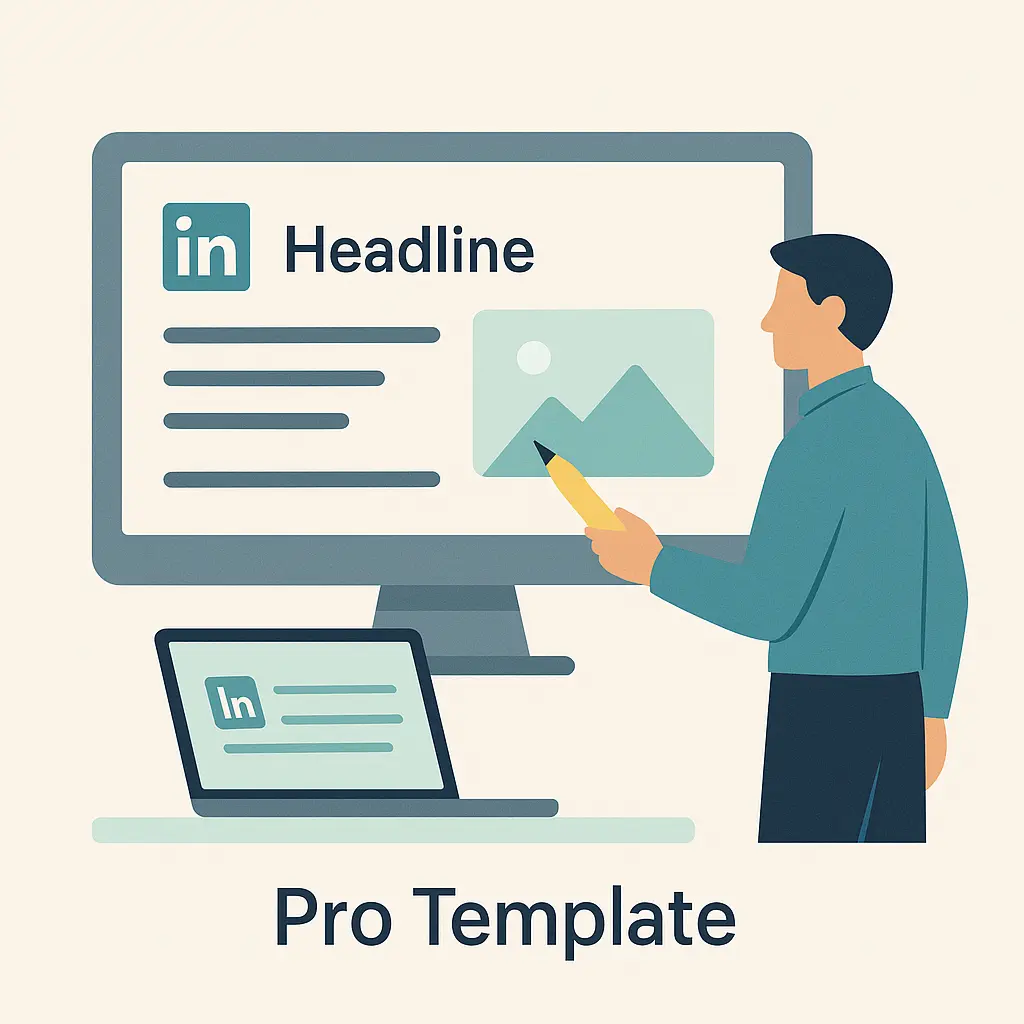
LinkedIn has become a powerful tool for professionals who want to grow their network, share industry knowledge, or enhance their personal brand. Yet, the task of crafting the perfect LinkedIn post can often feel overwhelming. How do you craft content that both engages your audience and demonstrates your expertise, all while matching your career goals?
In this article, we aim to simplify the process of crafting the perfect LinkedIn post. We will offer actionable tips, explore different post types, and provide a structured LinkedIn post template to help organize your content creation journey.
Understanding the Purpose of Your LinkedIn Post
Before you begin penning your thoughts, it’s crucial to understand the intent behind your LinkedIn post. Different goals require different approaches, whether you’re aiming to engage your audience, share a professional achievement, or offer insights into industry trends.
Identifying Your Goal
Begin by defining your main goal. Are you aiming to boost your visibility? Or do you want to position yourself as a thought leader? Each objective sets the tone and content for your post. Knowing your goal helps you create a message that connects with your audience.
Tailoring Your Approach
Once your objective is clear, tailor your approach accordingly. For instance, if you’re aiming to share a professional achievement, consider the language and details that will best convey your success. On the other hand, if you’re discussing industry trends, ensure your content is backed by data or personal insights. Tailoring your approach ensures your message is received as intended.
Audience Consideration
Understanding your audience’s interests and needs is fundamental. Take the time to research and analyze what your audience engages with most. This knowledge will guide you in crafting content that not only reaches but also resonates with your intended readership. By aligning your content with audience preferences, you enhance the impact of your message.
Types of LinkedIn Posts

LinkedIn offers a variety of post types, each serving a unique purpose. Understanding these can help you choose the right format for your message.
Thought Leadership
Sharing insights or opinions on industry trends, best practices, or innovations positions you as an expert in your field. Thought leadership posts should be informative, backed by research or experience, and designed to spark conversation. They are not only about showcasing expertise but also about engaging with the community.
Company Updates
For those representing a company, sharing news, achievements, or milestones keeps your audience informed and engaged. These posts should reflect the company’s values and vision, offering insights into its culture and achievements. They serve to strengthen brand loyalty and foster a sense of community among followers.
Personal Achievements
Celebrating personal milestones such as promotions or completed projects not only highlights your accomplishments but adds a personal touch to your profile. These posts should be humble yet proud, showcasing your journey and the challenges overcome. They help humanize your professional persona and build deeper connections with your network.
Engagement Posts
Designed to spark conversation, these posts invite interaction by asking questions, seeking opinions, or discussing challenges. Engagement posts should be open-ended, encouraging your audience to share their thoughts and experiences. They are a powerful tool for building relationships and gaining diverse perspectives.
Content Sharing
Sharing articles, videos, or other content relevant to your industry can provide additional value when paired with your unique perspective. These posts should be curated carefully, ensuring the content is timely and relevant to your audience. By adding your insights, you enhance the content’s value and establish yourself as a resourceful professional.
Crafting Your LinkedIn Post
Creating a compelling LinkedIn post involves several key steps. From grabbing attention to encouraging engagement, each element plays a crucial role.
1. Start with a Hook
The initial lines of your post are critical. They should captivate the reader’s attention, compelling them to click “See more.” Begin with a question, a surprising fact, or a bold statement to pique interest.
Crafting an Intriguing Opening
Your opening should be crafted to intrigue and engage. Consider what would make you stop scrolling. Is it a shocking statistic, a provocative question, or a relatable anecdote? Your hook should promise value and insight, enticing the reader to delve deeper into your post.
The Power of Questions
Questions are a powerful tool for engagement. They invite the reader to think and respond. Use questions that are relevant to your audience’s experiences and challenges. By asking the right questions, you create a dialogue rather than a monologue.
Bold Statements and Facts
Bold statements or surprising facts can serve as a powerful hook. They immediately capture attention and set the stage for the information to follow. Ensure your statements are factual and relevant to maintain credibility and authority.
2. Be Clear and Concise
LinkedIn users often browse quickly through their feed. It’s vital to keep your post succinct and direct. Utilize short sentences and paragraphs to enhance readability.
Simplifying Complex Ideas
Breaking down complex ideas into digestible parts is key. Use clear language and simple terms to ensure your message is understood. Avoid jargon unless it is widely recognized by your audience.
Structuring Your Content
Organize your content logically. Start with the most important information and follow with supporting details. This structure helps the reader grasp your message quickly and effectively.
The Art of Brevity
Being concise doesn’t mean leaving out important details. Focus on what’s essential to your message and eliminate filler content. Brevity enhances the impact of your post and respects your audience’s time.
3. Use a Professional Tone
While LinkedIn is a social platform, maintaining a professional tone is crucial. Avoid slang or overly casual language. Remember, you’re addressing a professional audience.
Setting the Right Tone
The tone of your post should reflect your professional persona. Consider your industry norms and the expectations of your audience. A consistent tone builds trust and reinforces your personal brand.
Balancing Professionalism with Personality
While professionalism is key, don’t shy away from letting your personality shine through. Authenticity can make your posts more relatable and engaging. Strive for a balance that reflects who you are as a professional.
Language and Style
Choose your words carefully, ensuring they align with your message and audience. Use active voice and strong verbs to convey confidence and clarity. Your language should inspire, inform, and engage.
4. Add Value
Your post should offer value to the reader. Whether sharing insights, providing tips, or offering solutions to common problems, ensure your content benefits your audience.
Identifying Value Propositions
Determine what unique value your post offers. Is it new information, a fresh perspective, or actionable advice? Highlight this value to capture interest and encourage engagement.
Providing Insights and Solutions
Offer insights that address your audience’s challenges or questions. Provide practical solutions or advice that they can apply. Your post should aim to educate and empower.
Sharing Knowledge and Expertise
Use your expertise to provide credible content. Share experiences and lessons learned to offer valuable perspectives. By positioning yourself as a knowledgeable resource, you build credibility.
5. Include a Call to Action
Encourage your audience to engage with your post by including a call to action (CTA). Prompt them to comment, share their thoughts, or connect with you.
Crafting Effective CTAs
A compelling CTA prompts the reader to take action. Be clear about what you want them to do, whether it’s commenting, sharing, or connecting. An effective CTA is specific and encourages interaction.
Encouraging Engagement
Create opportunities for your audience to engage. Pose questions, invite opinions, or request feedback. Engagement not only boosts your post’s visibility but also fosters community.
Building Connections
Use your CTA to build connections and expand your network. Encourage readers to connect with you for further discussions or collaborations. Strengthening your professional network is a key benefit of LinkedIn.
Leveraging the Professional LinkedIn Post Template

To streamline your content creation process, consider using a professional LinkedIn post template. This template provides a structured format to ensure you cover all essential elements of a successful post.
LinkedIn Post Template Overview
A well-crafted template can guide your content creation. It ensures that you include all necessary components, from a captivating headline to an engaging CTA. By following a template, you maintain consistency and quality across your posts.
The Components of a Successful Post
- Headline: Start with a hook to capture attention.
- Introduction: Introduce the topic and why it’s relevant.
- Main Content: Provide insights, share experiences, or discuss challenges.
- Conclusion: Summarize key points or takeaways.
- Call to Action: Encourage engagement and interaction.
Customizing the Template for Your Needs
While templates provide structure, customization is key. Adapt the template to suit your message and audience. Personalize the content to reflect your voice and objectives. A flexible approach ensures your posts remain authentic and engaging.
Utilizing LinkedIn Post Generators
For those who struggle with writer’s block or need inspiration, LinkedIn post generators can be a valuable tool. These platforms offer automated suggestions or templates based on your industry or goals.
Exploring LinkedIn’s Content Suggestions
LinkedIn offers its own content suggestion tool, providing trending topics and industry news to inspire your posts. By leveraging these suggestions, you can ensure your content remains timely and relevant. These insights can help spark ideas and keep your content aligned with current conversations.
AI Content Generators
AI content generators streamline the content creation process by offering inspiration and structure. Tools like Linkify help you stay consistent on LinkedIn by generating personalized post ideas tailored to your brand and audience, making it easier to show up regularly and authentically.
Balancing Automation with Personalization
While generators offer convenience, they should complement rather than replace your unique voice. Use them as inspiration, but ensure your content reflects your personality and expertise. Striking a balance between automation and personalization preserves the integrity of your brand.
LinkedIn Post Ideas to Inspire You
If you’re ever stuck on what to post, here are some LinkedIn post ideas to spark your creativity:
Share a Success Story
Narrate a success story or case study from your career. Highlight the challenges faced, the solutions implemented, and the results achieved. Such stories not only showcase your problem-solving skills but also inspire and motivate your audience.
Discuss Industry Trends
Dive into a recent industry trend and discuss its impact on your field. Offer your insights or predictions, backed by data or personal experience. By sharing your perspective, you position yourself as a knowledgeable professional.
Offer Tips or Advice
Share practical tips or advice based on your professional experiences. Focus on common challenges your audience might face and provide actionable solutions. This not only adds value but also demonstrates your expertise.
Highlight Influential Figures
Shine a spotlight on a mentor or colleague who has influenced your career. Share how their guidance or support has helped you grow professionally. Such posts can inspire others to seek mentorship and build meaningful relationships.
Celebrate Achievements
Celebrate a team achievement or company milestone. Acknowledge the hard work and dedication that contributed to the success. Highlighting achievements fosters a sense of pride and community within your network.
Conclusion
Crafting the perfect LinkedIn post requires a balance of creativity, strategy, and professionalism. By understanding your post’s purpose, leveraging templates, and utilizing tools like post generators, you can create engaging content that resonates with your audience.
Remember, LinkedIn is a platform for building professional relationships and showcasing your expertise. Use it to its full potential by sharing valuable insights and engaging with your network.
By following these guidelines and incorporating the professional LinkedIn post template, you’ll be well on your way to crafting posts that stand out in the LinkedIn feed. Engage authentically, and your content will not only attract attention but also foster meaningful connections.
